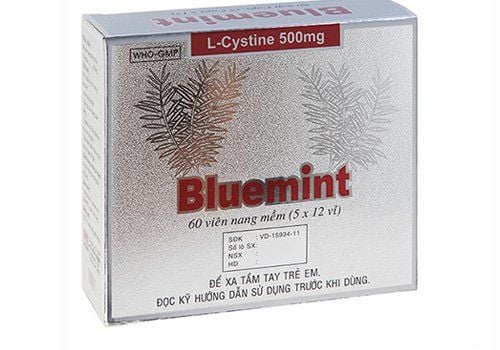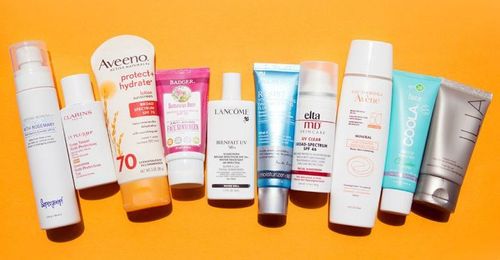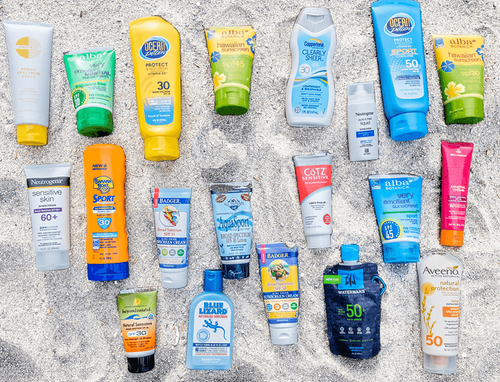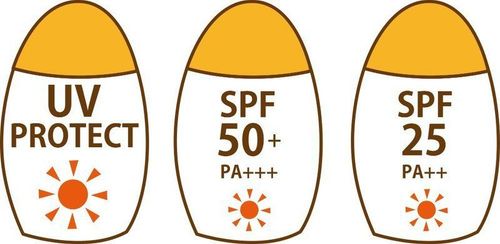This is an automatically translated article.
The article was professionally consulted by Dr. Le Thu Phuong - Department of Pediatrics - Neonatology - Vinmec Hai Phong International General Hospital.In the sun contains UV rays that are extremely harmful to the skin not only for adults but also for children. The use of sunscreen will help children avoid harmful agents to the skin.
1. When should children use sunscreen?
Dermatologists recommend that babies from 1-3 years old because the stratum corneum of the skin is very thin and has less melanin than adults, so it is not able to resist ultraviolet radiation. In addition, the baby's body surface area ratio is larger than the body mass, so the baby's sensitivity and ability to absorb sunlight through the skin is also much higher than that of adults.Therefore, if the baby is regularly exposed to the sun in the first years of life, it will lead to an increase in the number of skin pigmentation and easily cause many other genetic mutations. Especially in summer weather, this is the time when children are susceptible to sunburn even though they are fully clothed or necessary protective equipment when going out.
Dermatologists recommend that parents protect children from sun exposure at noon and summer sun. If you have to go out, parents should dress the child in loose, thick clothing and other protective gear. For children aged 1 year and older, mothers should apply sunscreen with SPF ≥15 on the baby's face and back of hands.
Therefore, when children are 1 year old or older, it is necessary to apply sunscreen for them when going outside to protect their delicate skin.
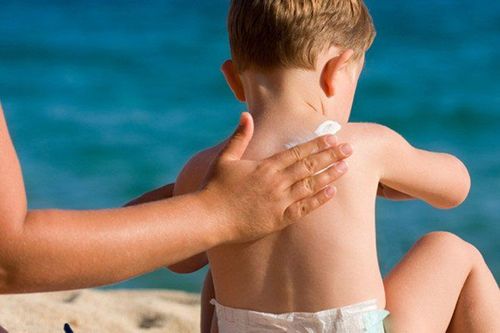
2. Understanding sunscreen product brands
If you just look at the ingredients in sunscreen, parents really won't see much difference in sunscreens for children compared to those intended for adults. In essence, the SPF value on each box of sunscreen is what we need to be most concerned about, regardless of whether it's for adults or children.According to the US Centers for Disease Control and Prevention, every time you are exposed to the sun, your skin will be affected by ultraviolet rays and have the risk of damaging your skin within just 15 minutes. The effects of this damage can cause early, severe wrinkles in the skin that can cause skin cancer.
This harmful agent is caused by two types of UV rays: UVA has a long wavelength of 320-400nm, UVB has a shorter wavelength 290-320nm. They have different wavelengths, so the degree of penetration into the skin is also different.
The American Academy of Dermatology describes UVB rays as "sunburn rays" and UVA rays as "aging rays" because UVB rays tend to cause sunburn, and UVA rays cause wrinkles and age spots.
Sunscreen will provide a "shield" against these UV rays. The higher the sun protection factor or SPF, the more this radiation is resisted. It's important to note that SPF only protects against UVB rays, not UVA rays. To protect against both, parents need to make sure they're choosing a "broad spectrum" sunscreen.
Experts say that the difference between SPF numbers is quite small after a certain point, for example a sunscreen with SPF 15 can block 93% of UVB rays, compared to 97% for SPF 30.
Sunscreen products are also "water resistant," which means the SPF on the label stays true even if you've been submerged for 40 minutes. For a highly water-resistant sunscreen, that period can be up to 80 minutes, assuming no dry towel.
3. Notes when parents use sunscreen for children
For children under 6 months old, parents need to consult a doctor before using sunscreen on their baby, should not buy it and use it improperly, it will harm the baby's skin. When applying sunscreen to your baby, you must be very careful because the baby's skin is very delicate and easily irritated. Apply sunscreen comfortably, making sure to apply it all over the body, including the back of the knees, hands, feet, ears, face and nose, absolutely do not let the cream get into your baby's eyes. Dermatologists recommend sunscreens suitable for children 1 year of age and older that contain inorganic filters such as zinc oxide and titanium dioxide. Because these ingredients do not penetrate the first two layers of the stratum corneum, they cause less irritation but still provide effective UVA and UVB protection.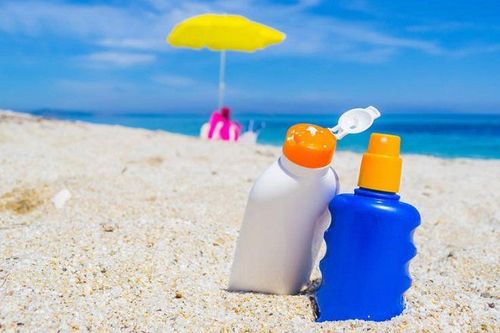
4. How to use sunscreen safely for children
First of all, parents need to pay attention to choosing a sunscreen with a safe index and suitable for children. For example, when going fast in the sun, mothers can apply sunscreen with SPF 30 or less for babies. When going swimming or bathing on the beach, children need to use sunscreen with a higher index, SPF 40 or SPF 50 and have more water resistance so that the sunscreen does not wash off.In addition, parents need to pay attention to an important thing that is to apply sunscreen about 30 minutes before going outside. If you apply sunscreen while you are out in the sun, it will not have much effect and your baby's skin will still be affected by the sun.
When applying sunscreen, pay attention to apply a sufficient amount to promote its full effect in the sun, depending on the skin area, you can apply more or less. But need at least about 2 teaspoons to be enough for the baby's skin.
Sunscreen not only comes in topical form but also comes in spray form, and similar to topical application, make sure to spray an adequate amount all over your baby's skin. When using sunscreen for children, whether applied or sprayed, parents should pay attention not to apply or spray directly on the skin, but apply it on the palms of your hands first, then rub it evenly and gently apply it all over the baby's skin. If using a spray sunscreen that can be sprayed directly on the body, parents should spray it on their hands first and then apply it to the baby's skin.
With sunscreens for children, applying sunscreen every 2 hours will ensure safer and promote effective sun protection for babies. Especially when exposed to water, children need to be reapplied sunscreen every 2 hours so that their skin does not burn or become red.
At Vinmec International General Hospital, children can be examined and consulted directly by pediatricians, Dermatologists, and Allergists, and consulted directly for mothers to choose suitable sunscreen products. , the most effective and safe way to use for children.
Please dial HOTLINE for more information or register for an appointment HERE. Download MyVinmec app to make appointments faster and to manage your bookings easily.
| Đăng ký tư vấn dinh dưỡng cho bé tại: https://i.vinmec.com/dangkytuvandinhduong |
|---|






